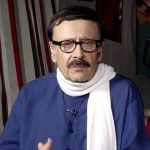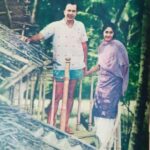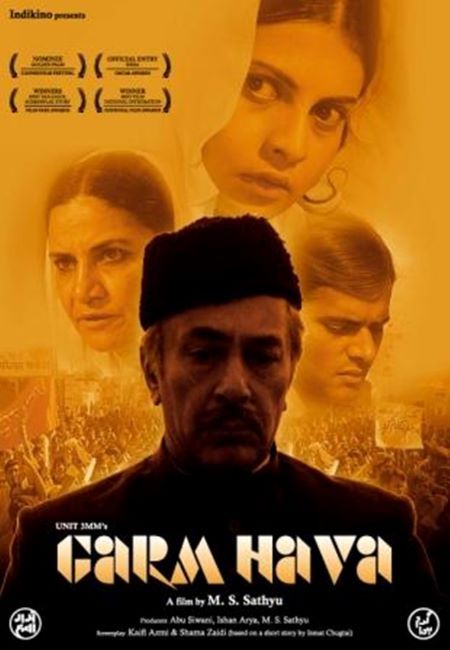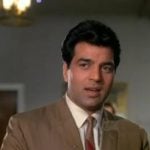Balraj Sahni Age, Death, Wife, Children, Family, Biography & More
| Bio/Wiki | |
|---|---|
| Birth Name | Yudhishthir Sahni |
| Profession(s) | •Actor •Writer |
| Famous For | His method acting and appearance in films such as 'Do Bigha Zameen' (1953) and 'Garm Hava' (1973) |
| Physical Stats & More | |
| Height (approx.) | in centimeters- 178 cm in meters- 1.78 m in feet & inches- 5’10” |
| Eye Colour | Black |
| Hair Colour | Black |
| Career | |
| Debut | Hindi Film - Insaaf (1946) Assamese Film - Era Bator Sur (1956)  Punjabi Film - Satluj De Kandhe (1964)  |
| Last Film | Jallian Wala Bagh (1977) as "Udham Singh" |
| Last Play | Bapu Ki Kahega (1973) |
| Awards, Honours | Bengal Film Journalists’ Association Award • 1945 - Best Art Direction in the Hindi language for Shakuntala • 1968 - Best Actor In a Supporting Role in Hindi language for Aasra • 1975 - Most Outstanding Work Of The Year in Hindi language for Garm Hava Padma Shri • 1969 - For outstanding contribution to Indian Cinema Soviet Land Nehru Award • 1969 - For Mera Rusy Safarnama |
| Personal Life | |
| Date of Birth | 1 May 1913 (Thursday) |
| Birthplace | Rawalpindi, Punjab Province, British India (now Pakistan) |
| Date of Death | 13 April 1973 |
| Place of Death | Mumbai, India |
| Age (at the time of death) | 59 Years |
| Death Cause | Cardiac arrest |
| Zodiac sign | Taurus |
| Signature |  |
| Nationality | • British Indian (1913-1947) • Indian (1947-1973) |
| Hometown | Mumbai |
| School | • Arya Samaj Gurukul • Dayanand Anglo-Vedic School (DAV) |
| College/University | • Government College University, Lahore • Government Gordon College, Rawalpindi |
| Educational Qualification | • B.A. Hindi • M.A. English |
| Religious Views | Atheist Note: Although, he was born in a family of Arya Samaj followers, he turned away from religion and became an atheist. |
| Food Habit | Non-Vegetarian |
| Political Inclination | Communist Party of India |
| Hobbies | Reading, Writing |
| Relationships & More | |
| Marital Status (at the time of death) | Married |
| Family | |
| Wife/Spouse | • Damayanti Sahni (1936 - 1948) (deceased due to amoebic dysentery; actress and social activist) • Santosh Chandhok (1949–1973) (writer)  |
| Children | Son- 1 • Parikshit Sahni (actor, writer)  Daughter(s)- 2 • Shabnam Sahni  • Sanober (step-daughter) |
| Parents | Father- Harbans Lal Sahni (import businessman) Mother- Lakshmi Devi (homemaker) |
| Siblings | Brother- Bhisham Sahni (famous writer, playwright, actor) |
Some Lesser Known Facts About Balraj Sahni
- Balraj Sahni was a well-known actor and writer.
- Balraj often worked in films that contained a social message and had appeared in over 100 films throughout his career.
- Some of the films that he is known for include Dharti ke Lal (1946), Hum Log (1951), Do Bigha Zamin (1953), Satta Bazaar (1959), Kabuliwala (1961), Neel Kamal (1968), Do Raaste (1969), and Garam Hava (1973)
- He knew many languages including English, Hindi, Urdu, Punjabi, Bengali, Marathi, and Gujarati.
- He began his schooling from Arya Samaj Gurukul. After protesting to his father about the quality of education in Gurukul, he was moved to D.A.V. School.
- Balraj started writing short stories while studying at the Government College, Lahore, publishing them in various college journals, including ‘Ravi.’ He continued to write short stories throughout his life.
- In the beginning, Balraj started his career by working in his father’s import business in 1934.
- In 1937, he took to journalism and moved to Lahore. There, he started publishing ‘Monday Morning,’ a weekly newspaper.
- As his newspaper failed to find any success, he went to Calcutta (now Kolkata) with his wife, Damyanti, where his frequency of publishing short stories increased.
- In ‘Balraj: My Brother,’ Bhisham Sahni talked about the activities of his brother Balraj in Calcutta and wrote,
He began contributing humorous pieces to a pictorial weekly, called Sachitra Bharat, from which he earned exactly four rupees per article. His interesting children’s tale, ‘Dhapor Shankh’, was written in those days.”
- Since the money he received from writing wasn’t enough, he moved to Rabindranath Tagore’s Shantiniketan, Kolkata, in the late 1930s. Along with his wife Damyanti, he became a teacher there and taught at the Visva-Bharati University.
- He started writing in the Punjabi language after the advice of Rabindranath Tagore.
- During his stay in Shantiniketan, he met Mahatma Gandhi and went with him to Sevagram. There, he worked in the editorial staff of their newspaper, ‘Nai Talim.’
- In 1939, he moved to England to become a radio presenter in the Hindi language on BBC. He became a Marxist after watching Russian cinema in England.
- He returned to India after 4 years in 1943 and joined the Indian People’s Theatre Association (IPTA).
- After returning to India, both Damyanti and Balraj joined the Communist Party of India. As a member of the Communist Party, she would often work and eat with the slum dwellers.
- She eventually caught amoebic dysentery, a parasitic infection caused by drinking contaminated water. The medicines she took for the treatment affected her heart badly, resulting in her death.
- In his biographical book, ‘Balraj: My Brother,’ Bhisham Sahni talked about the impact Damyanti’s death left on Balraj Sahni and wrote,
It was a staggering blow for Balraj. Dammo’s passing away in the prime of her youth, at the age of twenty-eight, was like the removal of the king-pin from Balraj’s life. She had been to him a devoted wife and a very enlightened life-partner. During the last three years they had been pursuing together these activities, in the same ardent and selfless manner, which had not only brought them closer but also made their marital life wholesome and happy.”
- In an interview, Parikshit Sahni claimed that Balraj Sahni wasn’t a religious person and said,
He was averse to religion. In his book, Mera Drishitikon, he urged readers to be wary of padres, pundits and mullahs. They are the ones causing wars in the world he wrote.”
- Balraj Sahni made his debut in the Hindi cinema with ‘Insaaf’ in 1946.
- He worked on a few more films in the same year including ‘Door Chalen,’ ‘Badnami,’ and ‘Dharti Ke Lal.’
- ‘Dharti Ke Lal’ opened to positive response from critics who praised the film’s intense and realistic portrayal of famine-struck Bengal
- He wrote the screenplay of the film, ‘Baazi’ (1951). The film was directed by Guru Dutt.
- Balraj, who played a jailor in the 1951 film ‘Hulchul,’ was taken to Arthur Road prison by Director K. Asif to prepare for his role.
- Sahni was sent to the same prison he had visited for joining a protest, causing delays in filming. He was released after serving a 6-month sentence.
- In 1951, he had a starring role in a critically appraised film, ‘Hum Log’ as Raj.
- All India Artists Association was founded by him.
- To prepare for his role in ‘Do Bigha Zamin’ in 1953, Balraj learned to pull a rickshaw from a member of the Rickshawallas’ Union and spent a week pulling a rickshaw in the summer heat of Kolkata.
- His legs were filled with blisters after pulling the rickshaw on the asphalt road.
- He met a real-life rickshaw puller on the set whose story was similar to the protagonist of the film, which helped him play the role efficiently.
- The film won the first Filmfare Award for Best Film.
- In 1954, it won Prix Internationale at the Cannes Film Festival, becoming the first Indian film to win the award.
- He had a starring role as Surajmal in ‘Bazooband’ in 1954. He also starred in ‘Aulaad’ in the same year.
- He played the starring roles of Laxman in ‘Tonga-wali,’ Ashok “Babuji” in ‘Seema,’ and Girdharilal “Girdhari” in ‘Garam Coat’ in 1955.
- In 1957, he played the starring role of Chandan in ‘Mai Baap.’
- In the same year, he starred in the Indo-Soviet co-production ‘Pardesi’ playing the role of Sakharam. The film was directed by Russian director, Vasili Pronin and Indian director, Khwaja Ahmad Abbas.
- He appeared in ‘Lajwanti’ as Nirmal Kumar besides Nargis.
- The film was honoured with the National Film Award for Best Feature Film in Hindi.
- He starred in ‘Ghar Sansar’ in 1958, as Kailash.
- He played the starring roles of Mr. Kapoor in ‘Chand’ and Rajendra in ‘Chhoti Bahen’ in the year 1959.
- He starred as Panchu Dada in ‘Dil Bhi Tera Hum Bhi Tere,’ as Devraj in ‘Bindya’ and as Dr. Nirmal Chaudhary in ‘Anuradha’ in the year 1960.
- He played the starring role of Shyam in ‘Bhabhi Ki Chudiyan’ and Abdul Rehman Khan in the critically acclaimed ‘Kabuliwala.’
- He wrote two travelogues, Mera Pakistani Safarnama (1960) and Mera Rusy Safarnama (1969).
- He starred as Ratan in ‘Shaadi’ and as Chaudhary Shambhunath in ‘Anpadh’ in 1962.
- He starred as Major Ranjit Singh in ‘Haqeeqat’ in 1964.
- His debut Punjabi film, ‘Satluj De Kandhe’ (1964) was honoured with the National Film Award for Best Feature Film in Punjabi language.
- He played a cameo role of Andhe Baba/Fakir in ‘Dak Ghar’ in 1965.
- He starred in the 1965 film ‘Waqt’ as Lala Kedarnath Prasanta and immortalized the song ‘Ae Meri Zohrajabeen’ with his performance.
- He starred in ‘Sunghursh’ as Ganeshi in 1968.
- He appeared in ‘Neel Kamal’ as Mr. Raichand in the same year.
- His performance in the 1969’s blockbuster film ‘Ek Phool Do Mali’ as Kailashnath Kaushal received a nomination for the Filmfare Best Supporting Actor Award.
- He appeared as Shankarnath in ‘Ghar Ghar Ki Kahani’ in 1970.
- He appeared in the Punjabi film ‘Nanak Dukhiya Sab Sansar’ in the same year.
- He played the role of Salim Mirza in ‘Garam Hava’ in 1973.
- The film was honoured with the Nargis Dutt Award for Best Feature Film on National Integration along with three Filmfare Awards.
- He was the founder of a drama group ‘The Juhu Art Theatre’ with his wife, Santosh and friends.
- He was a contributor to the Punjabi language magazine, Preetlari.
- In 1973, he founded the Punjabi Kala Kendra in Bombay. He took part in several plays organised by the Kala Kendra in Punjab.
- He wrote ‘Bapu Ki Kahega,’ his last play in the Punjabi language.
- In ‘Balraj: My Brother,’ Bhisham Sahni wrote that Balraj refused a Rajya Sabha seat. Later, he regretted it as being a member would have let him travel across India and understand the conditions better.
- In an interview, Parikshit recalled why his father would bring a typewriter during the film shoot and said,
He was called at 9 am and asked to put on make-up for a shoot. Till 6 pm, he wasn’t called for a single shot. Finally, he was told it was pack-up. Dad was livid. Then on he began carrying his typewriter on the set.
- Balraj Sahni passed away in 1973 after suffering from a heart attack in Mumbai. In an interview, Parikshit claimed that Shabnam’s passing away in the previous year had a huge impact on Balraj Sahni.
- In 2013, the Government of India issued a postal stamp to honour Balraj Sahni on the occasion of 100 Years of Indian Cinema.
- In his book, ‘The Non-Conformist: Memories of My Father Balraj Sahni’ (2019), Parikshit Sahni recalled sharing his first cigarette and beer with his father, Balraj Sahni.
- In the book, Parikshit also wrote about Balraj’s belief in social realism and his habit of wearing a fake nose and moustache while sitting at the railway station and closely observing people and their manners.






















